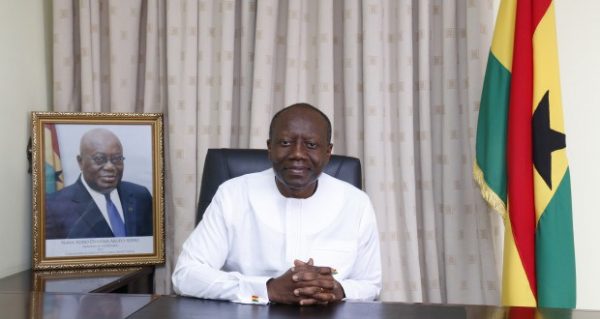The legacy debt owed by State-Owned Enterprises (SOEs) in the energy sector has affected their viability, necessitating a restructuring and priority repayments of their debts.
It has also affected the liquidity of many banks that are owed by these SOEs.
For this reason, the ESLA (Act 899) was passed by the erstwhile government to harmonise energy sector levies and taxes on petroleum products, with proceeds from the levies used to ring-fence the various energy sector legacy debts.
In a statement issued by the Public Relations Unit of the Ministry of Finance yesterday, June 15, 2017, the Ministry selected the two banks after evaluating 10 proposals received in response to its “Request for Proposals for Transaction Advisors for an ESLA backed Bond”.
“After evaluating 10 proposals received in response to our Request for Proposals for Transaction Advisors for an Energy Sector Levy Act (ESLA) backed bond, the Ministry of Finance is pleased to announce the selection of Fidelity Bank and Standard Chartered Bank-led consortia as Joint Lead Managers (JLMs),” the statement said.
The Joint Lead Managers are expected to work closely with members of their respective syndicates/consortia and any other local banks or financial institutions as co-managers with the view to building capacity locally and facilitating knowledge transfer.
“The Lead Managers, on behalf of Government (the ‘Sponsor’) shall set up a Special Purpose Vehicle (ESLA-SPV) to issue a long-term bond (The ‘Energy Bond’ or the ‘Bond’) on the back of ESLA receivables assigned to the SPV, which shall be listed on the Ghana Stock Exchange (GSE),” the statement noted.
It added that: “The ESLA SPV is expected to issue bond(s) to the tune of about GH¢10 billion, being the total estimated legacy debt within the energy sector. A portion of the bond proceeds shall also be used to refinance previously restructured debt due Banks that are currently being repaid with ESLA receivables, as well as the BDC debt due the Banks.”
According to the statement, the Energy Bond issuance, proceeds of which will be used to repay the legacy debt of the energy sector SOEs, is in line with government’s strategy as stated in paragraph 805 of the 2017 Budget Statement and Economic Policy.
This is to streamline ESLA flows to resolving the various issues within the energy sector which have led to intermittent power supply and high tariffs, as well as provide liquidity to the banking sector.
Gov’t settles on 2 banks as joint energy bond managers
- Posted on
- Comment

GOVERNMENT has appointed Fidelity Bank and Standard Chartered Bank as Lead Managers for the issuance of the Energy Sector Levy Act (ESLA) backed long-term bond to resolve the energy sector legacy debt.
By Raju J. R. PARWANI, ACCRA










 (Selorm) |
(Selorm) |  (Nana Kwesi)
(Nana Kwesi)